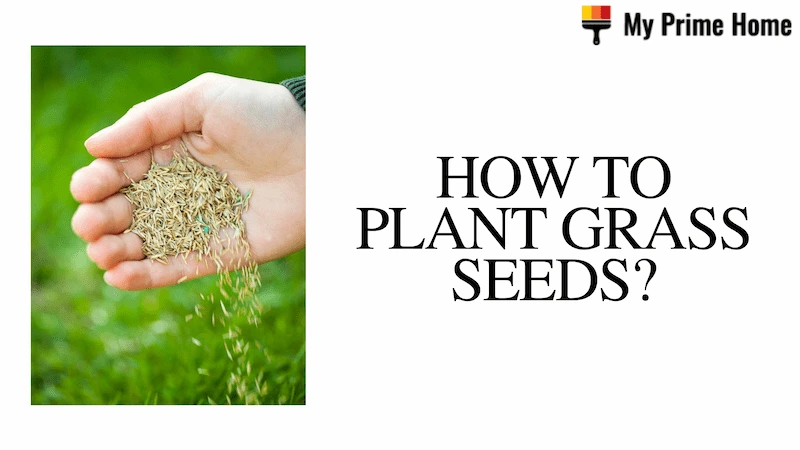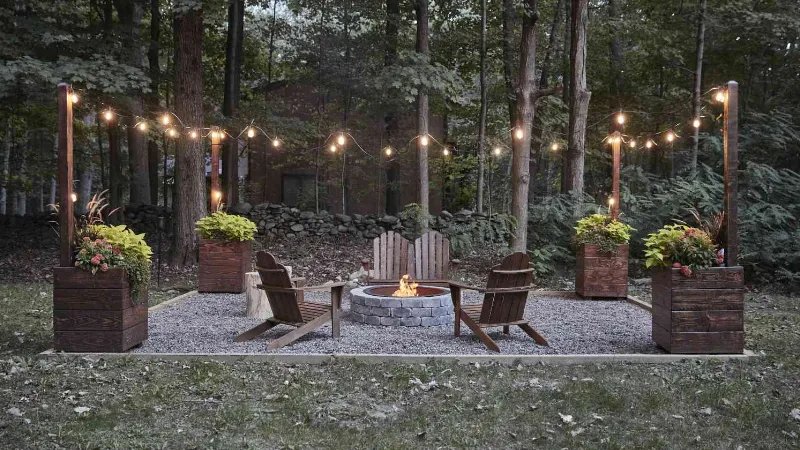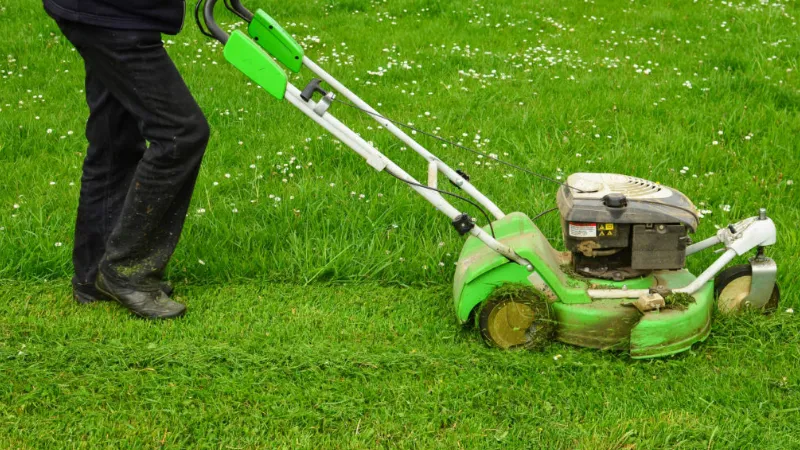The most frequent causes of your Aloe starting to wilt or die include overwatering, root rot, and sunburn. Don’t give up if your aloe vera plant appears a little sick. We’ll give you the essential knowledge you need to diagnose your plant’s problem and revive a dying aloe plant.
Aloe Plants are dying because of improper water behaviors, getting sunburned, getting frozen, drooping, rotting, and pests…
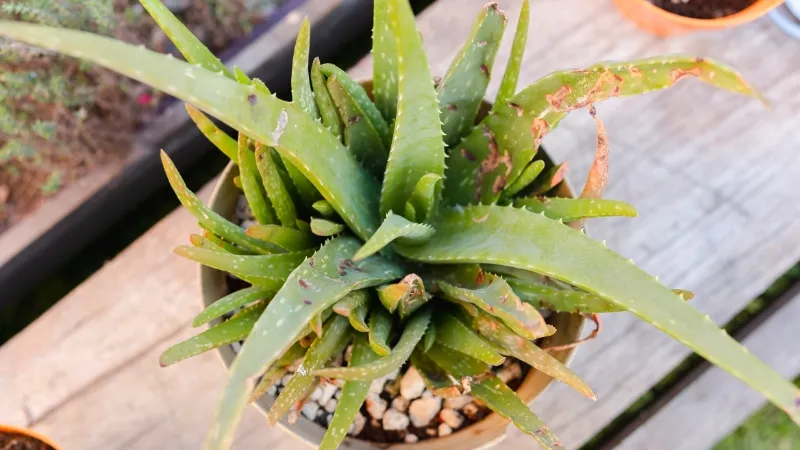
If you want to learn more, keep reading.
How to Revive a Dying Aloe Plant?
Solving the issue of dying aloe vera plants is not that difficult. You can save or revive your lovely houseplant as long as you are aware of the fundamentals and pertinent details. That said, here’s how you can problem solve your dying aloe vera plants:
Overwatered Or Underwatered Aloe Plant
Examine the leaves. Aloe vera plants are succulents that store water in their leaves. You probably have an overwatering problem if the leaves are yellow, brown, or swollen. Your plant probably needs water if you see the leaves puckering, dropping off, or turning nearly transparent.
- When was the last time you watered the plant? However, wilting leaves or dark, watery leaves can also be a sign of root rot. If you watered it recently, remove the plant from the pot and check for root rot.
Inspect the soil moisture. Pressing your index finger a few inches into the soil will reveal whether your aloe vera plant needs watering. Water must be given to your plant if the soil is dry. Aloe vera plants are succulents and do not need to be watered often. Overwatering can kill your plant!
- A two-week watering schedule should be adequate if you keep your plant outside.
- Water your indoor plant every three to four weeks if you keep it there.
Just enough water will make the soil moist. Never let water sit on top of the soil’s surface; use caution when watering. Continue to examine your plant weekly or biweekly to determine whether it requires watering by testing the soil. Between waterings, the soil’s top third should have time to dry out.
Modify watering according to the season. Aloe vera plants require more water in the summer than they do in the winter. In the fall and winter, water your plants less frequently, especially if they are housed in cool areas.
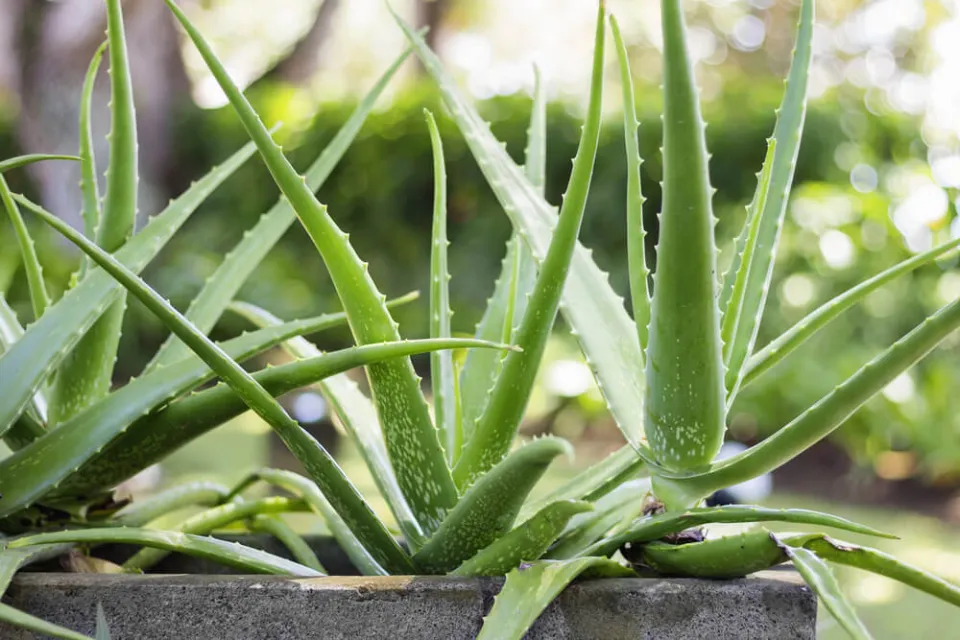
Sunburned Aloe Plant
Like the majority of succulents, aloe plants are vulnerable to sunburn during the hot summer months.
Check the leaves for symptoms of sunburn. If the leaves of your Aloe vera plant are turning brown or red, your plant may be sunburned.
Remove dead leaves. With a sharp, sterilized knife, cut the leaf away from the plant at the base. To prevent the rest of your plant from suffering, make sure to remove any dead leaves that are taking nutrients from other parts of the plant.
Reposition your plant. Transfer your plant to a location where it will receive indirect light rather than direct sunlight. If you’d like to transition your plant to an outdoor location, expose it to more and more sunlight gradually.
- Reposition the plant so that there is more space between it and the light source if it is usually in a position to receive artificial light rather than sunlight. Alternatively, you could try moving it outside where it will receive some diffused natural light as opposed to artificial lighting.
Water your plant. To find out if your plant needs watering, examine the soil. If your plant has been receiving excessive sunlight, the soil is probably dry because the water would be evaporating more quickly and the plant might be experiencing heat stress. (How Much Sun Do Aloe Vera Plants Need?)
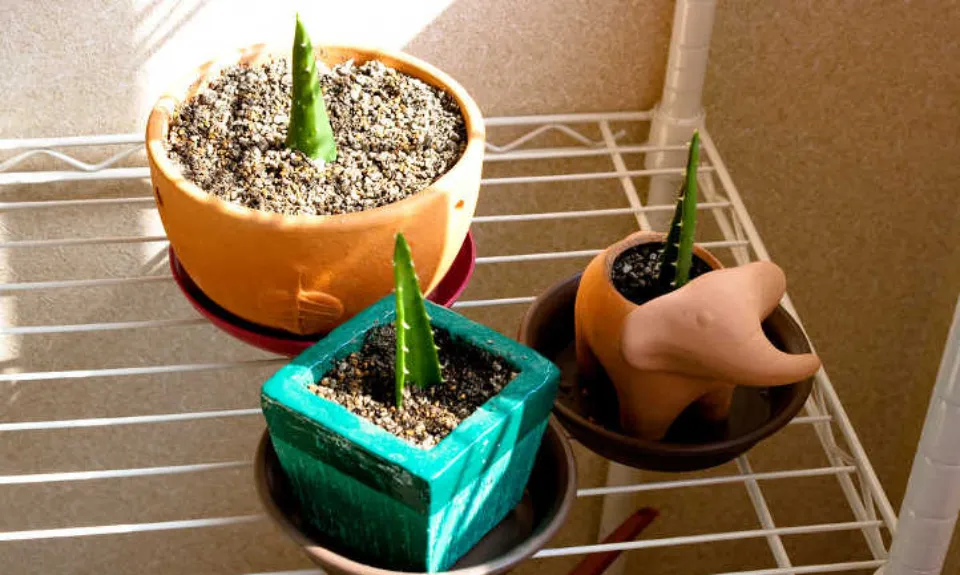
Frozen Aloe Plant
Aloe plants are susceptible to freezing during cold winter months.
Although Aloe plants can handle temperatures down to about 25 degrees Fahrenheit, they will start to die if the temperature dips below that.
Various symptoms of frost damage to an aloe plant could appear.
The leaves’ color could change from green to brown or yellow, and their leathery, firm texture could give way to mushy, soft leaves.
You must take action to revive your aloe plant if it exhibits symptoms of frost damage.
Here are a few things that you can do to revive a frozen Aloe plant:
- Obtain a warmer location for the plant. If you can’t move it indoors, try moving it to a location with more sunlight.
- Delete any leaves that are brown or yellow.
- The remaining leaves should be carefully peeled away from their stems. Clean the leaf with a soft bristle brush or cloth after removing any brown areas. Don’t use soap!
- Avoid watering your plant until it shows signs of life, such as new growth. The effects of frozen water on your plant will be negative.
- When it is once again above freezing, move the plant, if at all possible, to a sunny window or outside. The warmth will help it recover faster, and new growth should appear within a few weeks.
- Avoid fertilizing a frozen Aloe plant. A frozen or stressed plant may experience more negative effects from fertilization than positive ones.
If you take the recommended actions, your aloe plant should begin to feel and look better within a few weeks.
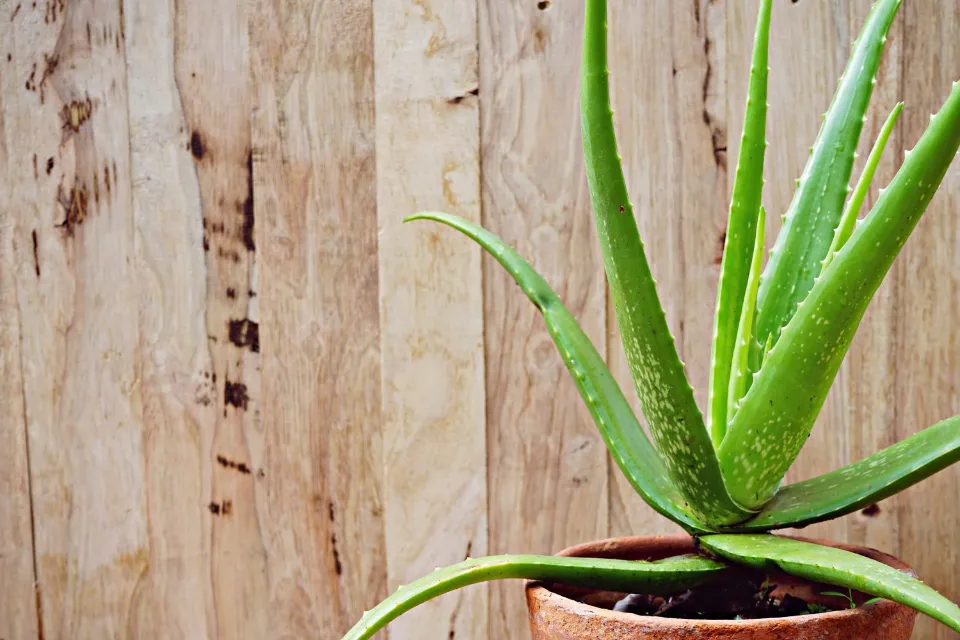
Drooping Aloe Plant
Aloe plants can droop for a variety of reasons, such as:
- Overwatering or underwatering
- Either there is too little or too much sun.
- Cold temperatures
- Fungal infection
- Insect infestation
Find out why your Aloe plant is drooping in the first place. You can take action to save your plant once you determine the cause.
Here are a few things that you can do to revive a drooping Aloe plant:
- Water your plant as needed after checking the soil for moisture, but make sure not to drown it or overwater it. If the soil is dry, water the plant thoroughly, let the top inch of soil air-dry, and then water the plant again.
- In order to get more or less sun, move the plant to a different location. Aloe plants require at least six hours of sunlight each day. While placing your plant near a bright window is acceptable, keep it out of direct sunlight.
- If the temperature is below 50 degrees Fahrenheit, move your plant to a warmer location. Try moving it to a location with more sunlight if you are unable to move it indoors.
- To your plant, apply a fungicide. Powdery Mildew, which affects aloe plants most frequently, can be treated with a fungicide like neem oil.
- Inspect your plant for insects, and treat if necessary. Mealybugs, aphids, and whiteflies are frequent pests that attack aloe plants. These pests can be eradicated by applying horticultural oil or insecticidal soap to the plant.
If you cannot revive your succulent, repotting it into fresh soil will help.
When repotting an aloe plant, it’s crucial to use a high-quality potting soil suitable for succulents and cacti.
It works well to combine one part sand or perlite with two parts soil. Don’t water your plant for one week after repotting it to give the roots time to re-establish.
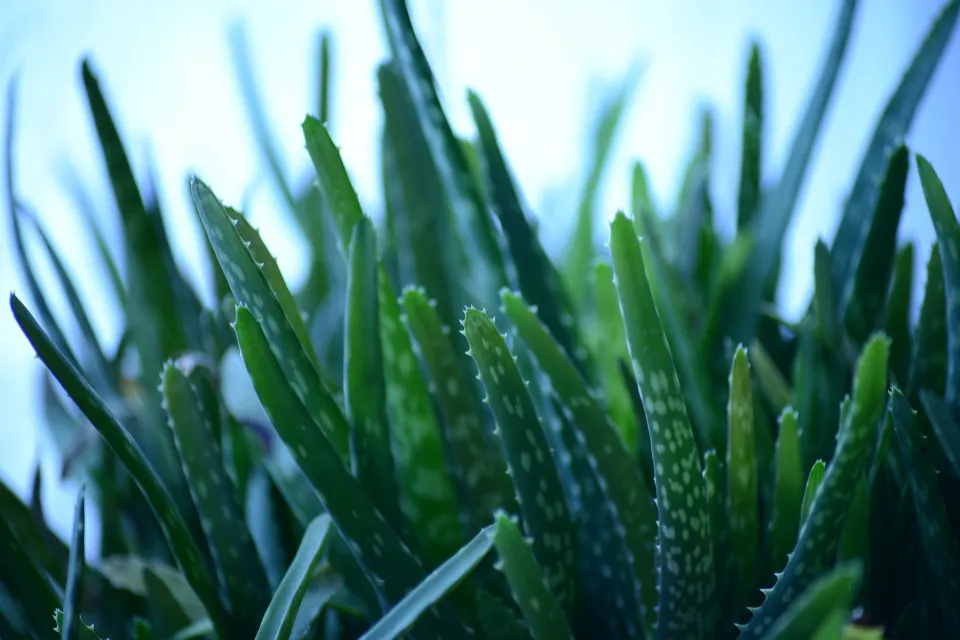
Rotting Aloe Plant
It’s most likely because the soil was kept too wet that your aloe plant is rotting.
If the roots of aloe plants aren’t given enough time to dry out in between watering cycles, they can easily rot.
Additionally, if the potting soil is too dense, it will prevent the soil from breathing and could lead to the rot of your plant.
If your Aloe plant is rotting, try the following:
- Put new soil in the plant’s pot. Ensure that the potting mix is well-draining and does not contain any fertilizers. The ideal soil mixture for cacti and succulents is potting soil.
- In between waterings, let the plant dry out. Water no more than once per week, and only when the soil feels dry to the touch.
- Put your aloe plant in a spot that receives plenty of sunlight. To thrive, aloe plants require sunlight. Any area that receives at least four hours of direct sunlight each day will do.
- Use a pot that has adequate drainage holes in the bottom. Aloe plants don’t enjoy being submerged in water, and if the soil is always moist, they can quickly rot.
Your aloe plant ought to begin to recover if you stick to these recommendations in a couple of weeks.
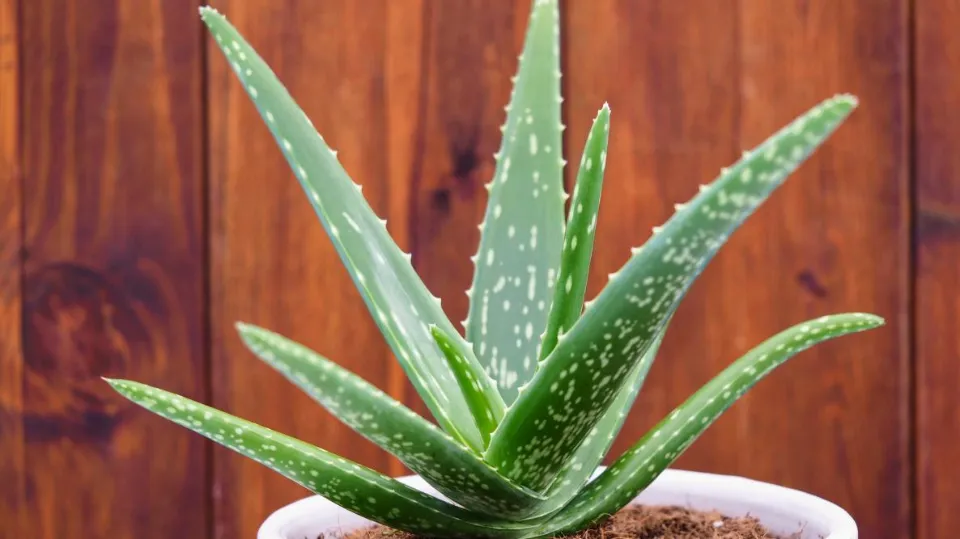
Aloe Vera Not Growing
It’s not necessarily dying if your aloe vera doesn’t seem to be growing; this is just a natural part of the plant’s seasonal cycle.
Aloe vera enters a state of dormancy in the Summer, typically when the temperature consistently exceeds 80°F (27°F)
At which point, aloe vera stops growing as a survival strategy to conserve water during times of intense heat and drought.
The aloe vera resumes growing in cooler temperatures in the Fall and Spring but growth should also slow down in the Winter as a reaction to less hours of sun.
In the Summer and the Winter the aloe vera is more susceptible to over watering as the demand for water is lower in Reducing watering in Summer and Winter is advised because of the soil’s propensity to dry out more slowly during these seasons due to dormancy.
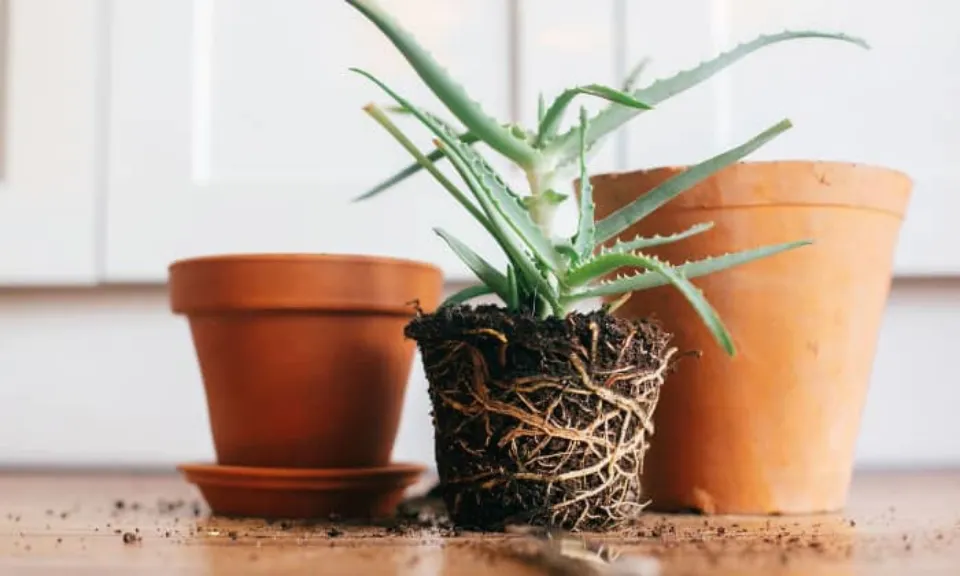
An Aloe Plant Without Roots
If your Aloe plant has lost its roots, there is still hope. You can try to propagate aloe plants by leaf cuttings.
To propagate an Aloe plant without roots, try the following:
- Take a leaf cutting. Cut off a healthy, fleshy Aloe leaf from your plant.
- Put the leaf’s tip in a hormone for rooting. This will help the cutting to root more quickly.
- A container with new potting soil and holes at the bottom is where you should place your aloe leaf.
- Maintain a moist but not soggy soil. Aloe plants dislike being submerged in water, and if the potting soil is consistently wet, the plants can easily rot.
- A bright area, but keep it out of direct sunlight, is where you should put your container.
- Your Aloe leaf cutting ought to start to grow again in a few weeks. Replanting the plant in better-draining soil is an option after it has established itself.
Aloe plants are easy to propagate and very forgiving if you make mistakes.
So don’t be discouraged if your first attempt at propagating an Aloe plant without roots doesn’t work. Just try again!
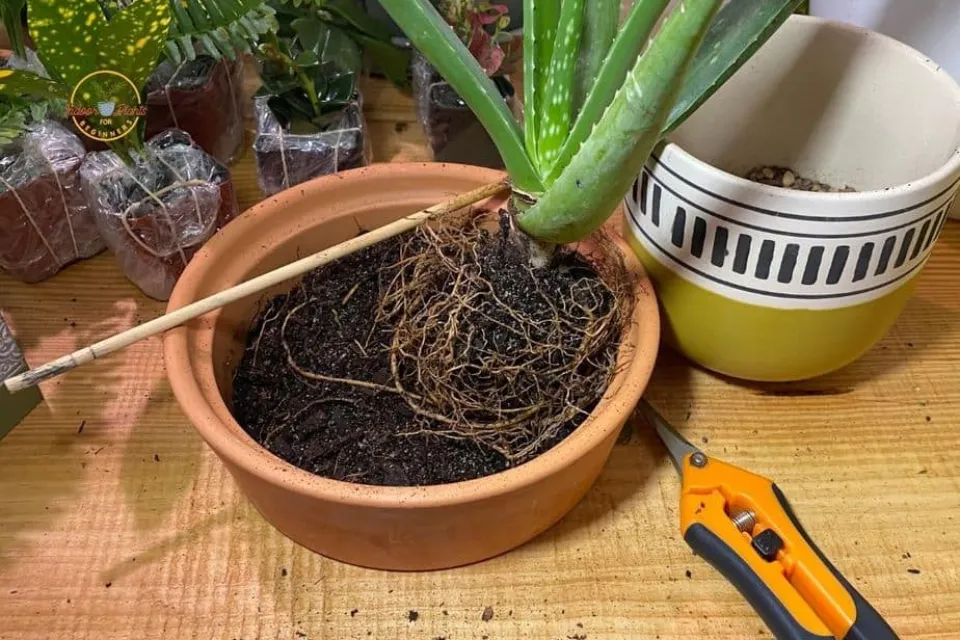
Check for Pests
Severe pest infestations may be the cause of dying aloe vera plants. These annoying insects cause your plants’ thick stems to droop by sucking the juice out of them. The nutrients in the sap of the aloe vera plant are what keep it alive, and the plant will eventually wither away without it.
Verify your plant’s foliage for eggs or pests. You’ll undoubtedly notice a lot of small brown patches as pests begin to die on the leaves. The snout beetle is among the most infamous pests on aloe plants. These insects pierce aloe vera plant leaves. If the infestation is severe, your plant will get weaken and eventually die.
So, make sure to get rid of any pests such as aphids, spider mites, fungus gnats, or mealybugs as soon as you spot them. You can manually remove them from your plant by doing so, or you can use a strong water stream to do so.
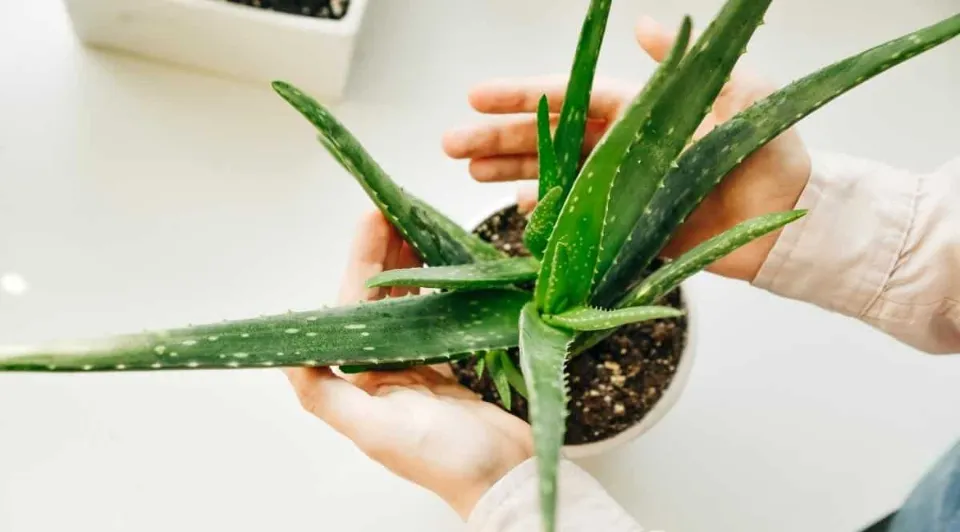
Check the Container
Check to see if the pot your aloe vera is in is the right size. Your houseplant’s roots will expand as it gets bigger in an effort to find more food and room. Because of this, putting them in a smaller pot won’t help your plants at all.
The simple solution to this issue is to move your aloe vera plant into a bigger pot once you notice that it has significantly grown. The plant’s foliage will show you when it’s time to transplant it. It’s time to transfer your plant to a bigger pot if the foliage is the same size as or larger than the pot.
By carefully lifting your plant from the stem’s base, you can determine whether it needs to be transplanted. If you see a tight mass of roots that are hard to untangle, it is most likely time to repot your aloe vera plant to a new, slightly bigger pot.
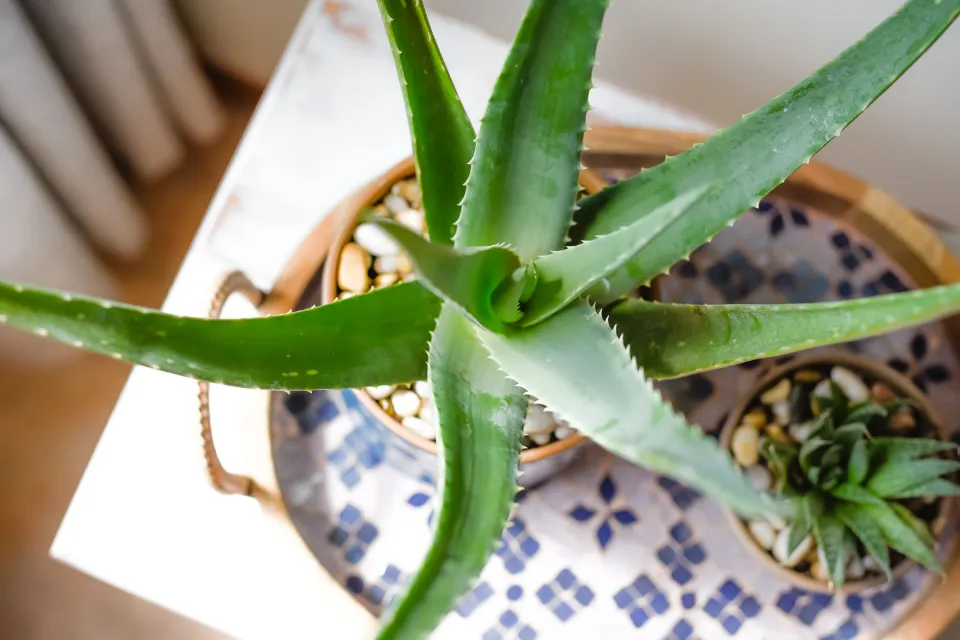
FAQs
How Do I Bring My Aloe Vera Plant Back to Life?
Living in conditions that are incompatible with those of its natural environment causes aloe vera to die back. To revive an aloe vera it is important to emulate the conditions of low rainfall, partial or full sun, and well draining gritty soils so the aloe can recover.
How Do You Save a Damaged Aloe Vera Plant?
If your aloe vera is in a bad condition due to broken leaves, make sure to expose the plant to more sunlight. We advise you place your aloe plant in a location where it can receive 4-6 hours of direct sunlight each day. Remove any damaged leaves as well so the aloe plant can concentrate on healing and expansion.
How Do I Know If My Aloe Plant is Dying?
The leaves on your aloe plant ought to be uniformly green in color, firm, upright, and plump. If the leaves look droopy, shriveled, or have brown or dead parts, you’ve got an unhappy plant. Nevertheless, you can usually solve the issue and heal your aloe. Overwatering is the most frequent issue with aloes.
How Do I Know If My Aloe Plant is Dying?
The leaves of your aloe plant should be uniformly green in color, firm, and upright. If the leaves look droopy, shriveled, or have brown or dead parts, you’ve got an unhappy plant. But most of the time, you can fix the problem and restore your aloe to health. Overwatering is the most typical issue with aloes.
Do Aloe Plants Need Direct Sunlight?
It is critical that you place your aloe in a window where it will receive a minimum of six hours of sunlight per day. Your succulent will start to stretch and lose its attractive, compact form in the absence of prolonged, direct light. As the stem ages, it might collapse.
Summary: How to Revive a Dying Aloe Plant?
If you know what to look for and can address these typical issues, learning how to revive a dying aloe plant can be simple.
Everyone looking for a truly unique indoor plant should consider aloe plants because they are relatively simple to care for.
You can revitalize your aloe plant with a little bit of work!
In the event that your aloe plant cannot be saved, don’t despair; you can always propagate it to grow a new plant.
If you have any questions, please leave a comment. My Prime Home tries to give you the best home improvement information. Don’t forget to share the post. Thank you for reading.
